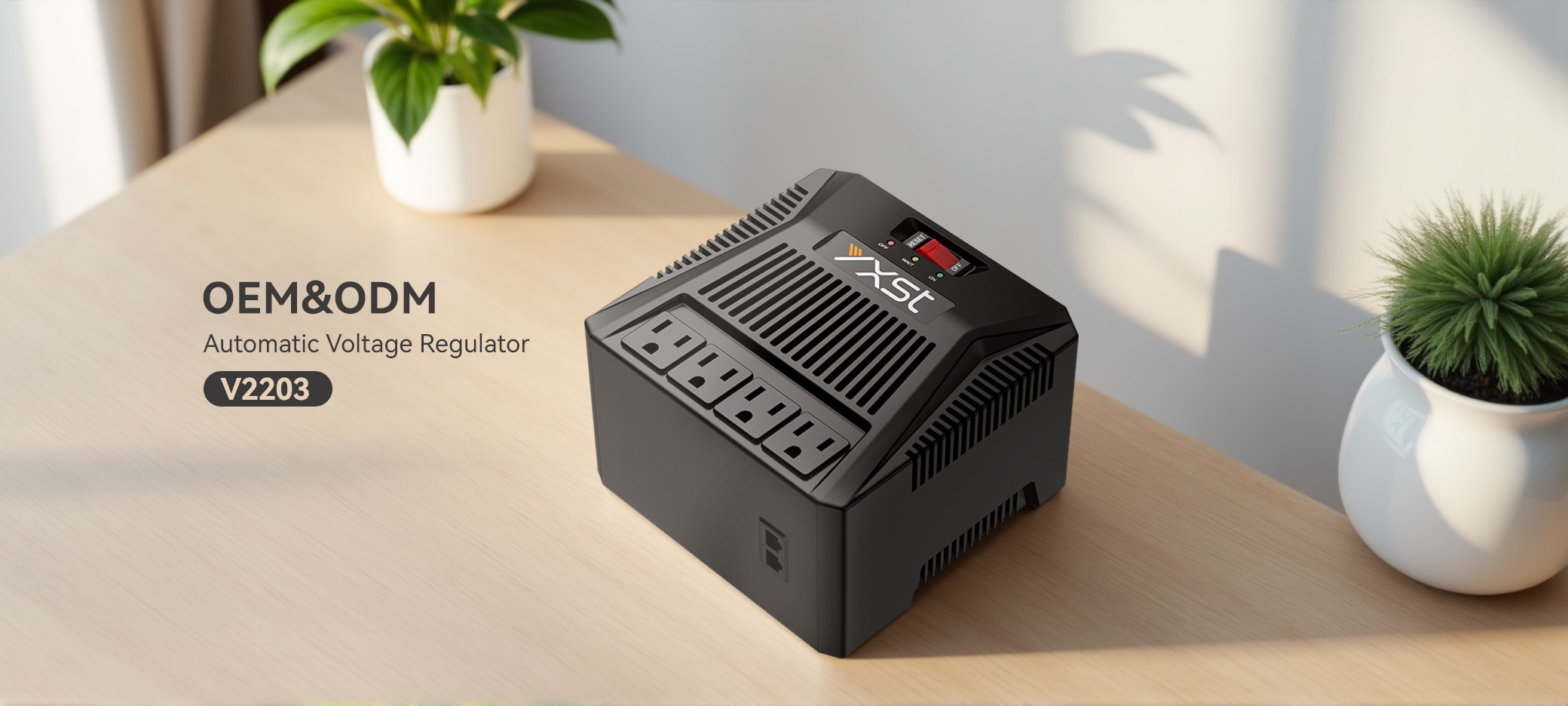3000VA/1500W 175 Joules Voltage Stabilizer For AC V2203 Features
◆ Flame retardant shell
Temperature flameretardant Excellent materialsafety and reliability
◆ Indicator reminder
Both childrenand adults can use it easilyGuardian family
◆ Premium copper contacts
Ensures perfect connection every time to prevent the plug from loosening

AC Voltage Stabilizer For Home, also known as a voltage regulator, is "an electronic device used to maintain a constant voltage output, primarily functioning to protect electrical appliances from voltage fluctuation damage" . These devices automatically adjust input voltage variations to deliver stable output voltage, ensuring connected equipment operates normally .
Key functions include:
- Preventing damage to equipment from over-voltage or under-voltage conditions
- Extending the lifespan of electrical appliances
- Maintaining consistent performance of sensitive electronics
- Protecting against power surges and spikes
V2203 AC Voltage Stabilizer 3000VA/1500W 175 Joules Technical Parameters
|
Capacity
|
3000VA/1500W
|
|
Input
|
|
Voltage
|
110/115/120VAC
|
|
Voltage Range
|
92-138VAC
|
|
Adjustable Delay Time
|
2/10/30s
|
|
Frequency
|
50Hz/60Hz
|
|
Output
|
|
Voltage Range
|
88-148VAC
|
|
USB Charging Port
|
2 Ports 2.1A Max
|
|
Surge Protection
|
175 Joules
|
|
Environment
|
|
Humidity
|
0-95%(Non-condensing)
|
|
Noise Level
|
Less Than 40dB at 1M
|
V2203 Voltage Regulator For AC 3000VA/1500W 175 Joules Parameter analysis
Rated power (1500W):
Indicates that the maximum power that the voltage stabilizer can continuously supply is 1500 watts. This means that the total power of all electrical devices connected to the voltage stabilizer must be less than 1500W to avoid damage due to overload.
Rated capacity (3000VA):
VA (volt-ampere) is a unit of power for alternating current, which is usually larger than watt (W) because the power factor is included in the capacity calculation (the power factor of common commodities is usually between 0.6 and 1.0). 3000VA means that the voltage stabilizer can carry a certain peak load, which is very useful when starting motor-type equipment (such as refrigerators, air conditioners, etc.).
Joule value (175 joules):
This value usually represents the instantaneous impact capability of the voltage stabilizer, especially for protection against surges and overvoltage. Joule is a unit of energy, and 175 joules represent the energy that the device can absorb to protect the connected electrical appliances and equipment from voltage fluctuations or shocks.
Flame retardant housing:
Flame retardant housing materials can effectively reduce the risk of fire caused by short circuits or overload of the equipment and enhance the safety of the equipment.
Indicator light:
Generally speaking, the indicator light is used to show the working status of the equipment, such as whether the power is connected, whether the voltage is stable, or whether it is overloaded. This can help you quickly determine the working status of the equipment.
Copper contacts:
Copper contacts have better conductivity. Compared with aluminum contacts, copper contacts are more efficient in current transmission, which can reduce energy loss and improve the overall performance and stability of the equipment.
V2203 AC voltage stabilizers are essential electronic devices designed to maintain a constant voltage level to protect electrical equipment from fluctuations in power supply. These devices play a critical role in both residential and industrial settings, ensuring the longevity and optimal performance of sensitive electronic equipment.
Basic Operating Mechanism
AC voltage stabilizers operate on the principle of automatic voltage regulation through either feedforward or negative feedback control loops . The core function involves continuously monitoring input voltage and making real-time adjustments to maintain stable output.
Application scenarios
The main application scenarios of household single-phase voltage stabilizers include the following aspects, combining actual needs and typical use cases of search results:
1. Dealing with areas with frequent voltage fluctuations
- Scenario: During aging power grids or peak power consumption periods (such as summer), voltage may fluctuate frequently (such as as low as 80V or as high as 270V), causing electrical appliances to malfunction or damage.
- Function: The voltage stabilizer can stabilize the input voltage within the range of 200V-230V to ensure the safe operation of home appliances.
2. Protect high-value electrical equipment
- Sensitive equipment: Precision electronic equipment such as air conditioners, refrigerators, TVs, and computers have high requirements for voltage stability. Unstable voltage may cause frequent start and stop, increase current, and shorten service life.
- Case: The compressor of the air conditioner is prone to overheating at low voltage, and the voltage stabilizer can avoid such problems.
3. Special power demand scenarios
- Old communities or rural areas: These areas have poor power grid infrastructure and voltage instability is more common. The voltage stabilizer can significantly improve the power supply quality.
- Home studio or small office: If you use printers, servers and other devices at home, the voltage stabilizer can prevent data loss or hardware damage.
4. Instantaneous protection when electrical appliances start up
- High-power electrical appliances start up: When the motors of refrigerators and air conditioners start up, they will generate instantaneous large currents (surge currents). The voltage stabilizer can buffer the impact and prevent the voltage drop from affecting other electrical appliances.
- Solution: It is recommended to choose a voltage stabilizer with a power of more than 30% greater than the total power of the electrical appliances to cope with instantaneous loads.
5. Temporary power or emergency scenarios
- Self-generated households: If a generator is used for power supply, the output voltage may be unstable and the voltage stabilizer needs to be adjusted to a safe range.
- Lightning-prone areas: The voltage stabilizer is combined with lightning protection design to reduce the voltage surge damage caused by lightning strikes.


